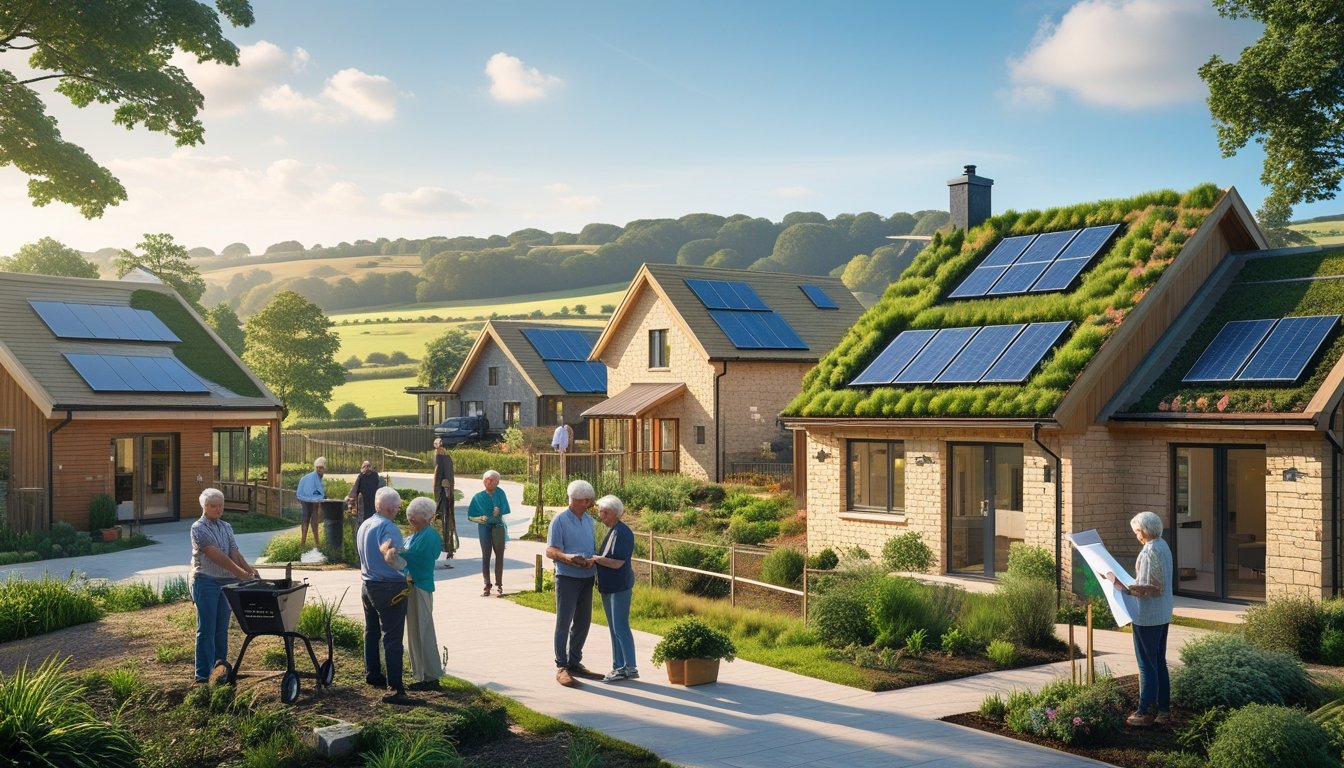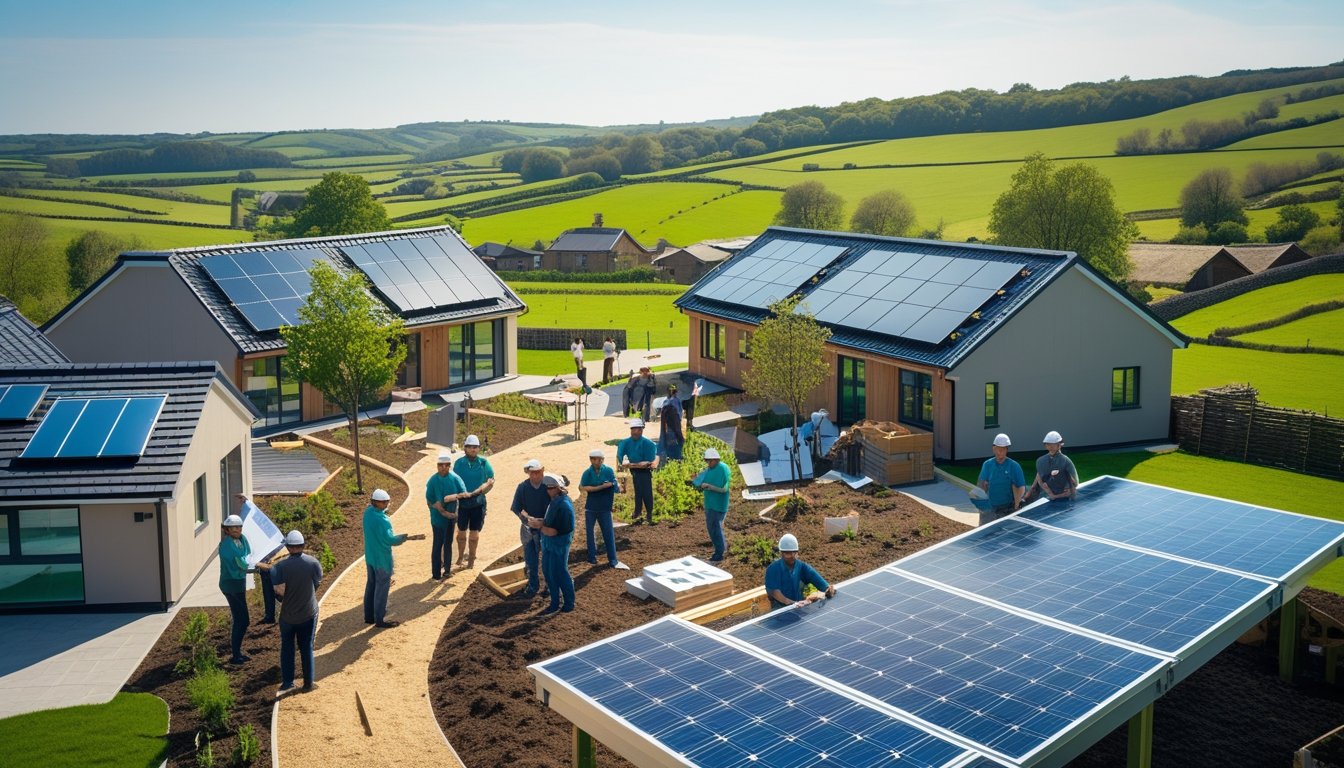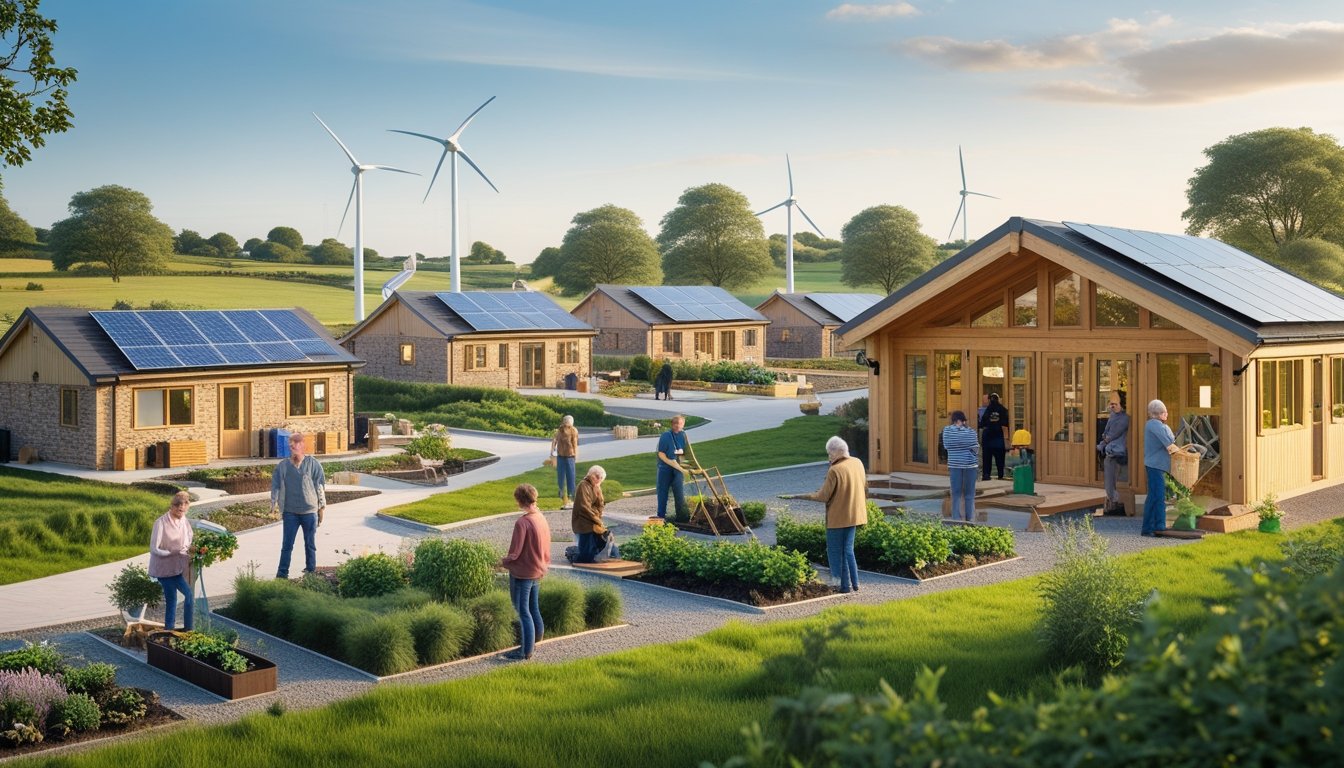Late updated: 26 Nov 2025 13:11
Written by: Oliver Bennett
Green Building Solutions For Rural UK Communities: Sustainable Strategies For The Countryside
Exploring green building solutions in rural UK communities reveals transformative possibilities for sustainable living. Leveraging renewable energy sources and eco-friendly construction methods offers a path towards reduced carbon footprints and energy independence in rural areas. Communities that invest in green building practices not only address pressing environmental challenges but also enhance their resilience to economic fluctuations and foster improved quality of life for residents.

Green building techniques tailored to rural settings incorporate local resources and innovative technologies. By doing so, they blend traditional aesthetics with modern functionality, ensuring that rural landscapes remain vibrant and viable. Community engagement in these initiatives ensures success, as local input and participation drive projects that meet unique local needs and challenges.
Key Takeaways
- Green building reduces carbon footprints in rural areas.
- Tailoring solutions to local needs boosts effectiveness.
- Community engagement ensures sustainable outcomes.
Core Green Building Solutions for Rural UK Communities
To address the unique challenges of rural UK communities, we focus on integrating sustainability and reducing environmental impact. Our core green building solutions involve using renewable energy, enhancing energy efficiency, and conserving resources while prioritising local materials and innovative construction methods.
Sustainable Materials and Construction Techniques
We prioritise using locally sourced materials to reduce the carbon footprint associated with transport. Timber frames, straw bales, and hemp are excellent options due to their low embodied carbon. These materials not only enhance the environmental sustainability of green buildings but also support the local economy.
Natural insulation, such as sheep's wool or recycled cellulose, offers high thermal performance, reducing the need for auxiliary heating or cooling. Sustainable construction techniques include passive solar design, which utilises the sun's position and natural heat to maintain comfortable indoor temperatures. Innovations like prefabricated building components or modular designs allow for faster, less invasive construction, preserving the natural landscape and minimising waste.
Renewable Energy Integration for Rural Dwellings
Integrating renewable energy systems in rural communities is central to our approach. Solar panels, or solar PV, are increasingly viable, even in less sunny regions, thanks to advancements in photovoltaic technology. Wind turbines and biogas systems offer further renewable energy solutions, both suited to the open spaces typical of rural areas.
Ground-source heat pumps are efficient for rural housing, utilising the earth's stable underground temperatures to provide heating and cooling. In addition to these systems, battery storage is essential to manage energy supply and demand, ensuring reliability and reducing reliance on the grid. This combination of technologies supports sustainable rural living and helps communities work towards net-zero carbon emissions.
Energy Efficiency and Thermal Performance
High energy efficiency in rural dwellings reduces energy consumption and lowers environmental impact. Smart meters and efficient lighting solutions are easy upgrades for enhancing household energy management. We implement advanced architectural design to include natural ventilation, reducing the need for mechanical systems.
By improving thermal performance, homes maintain the desired temperature with less energy input. This includes the strategic use of thermal mass and high-performance windows. Insulation plays a crucial role, with natural options like cork and hemp offering eco-friendly choices that also perform effectively. These strategies greatly contribute to the energy efficiency of green buildings in rural settings.
Water Management and Conservation Practices
Water management is critical in rural communities where supply can be inconsistent. Rainwater harvesting systems collect and store water for non-potable uses, reducing the demand on municipal sources. Greywater recycling further enhances conservation efforts by treating and reusing water from baths, sinks, and washing machines.
Sustainable water management combines technology and design to minimise water usage. Smart irrigation systems equipped with sensors can monitor soil moisture levels to limit water waste in gardens or agricultural settings. Encouraging native landscaping reduces the need for extensive irrigation, preserving natural water ecosystems and promoting biodiversity. These practices ensure that water conservation remains a priority in our green buildings.
Community Engagement and Socio-Economic Impacts

Engagement in community projects is essential for driving socio-economic impacts in rural areas. By involving local residents in participatory design and offering accessible training opportunities, we can achieve substantial economic benefits and stimulate rural development through cohesive, community-led initiatives.
Participatory Design and Community-Led Initiatives
Community engagement is crucial to the success of green building projects in rural UK areas. Participatory design invites local residents to contribute their ideas and expertise, ensuring that developments reflect the community's needs and aspirations. This collaborative approach can lead to enhanced social cohesion, as it brings individuals together over a shared goal.
Local initiatives often empower residents to take ownership of their projects, turning them into community leaders and advocates. By focusing on community-led initiatives, we can ensure more sustainable solutions that people are invested in and committed to maintaining. Governments and non-profits play a vital role in facilitating these processes through funding and logistical support, enabling communities to align eco-friendly infrastructure with their unique social and environmental contexts.
Socio-Economic Benefits and Rural Development
Implementing green building solutions can produce significant socio-economic benefits for rural communities. These projects can create new job opportunities, ranging from construction roles to positions in project management and maintenance. The economic input from renewable and sustainable projects also stimulates local markets, further contributing to rural development.
We often see an increase in entrepreneurship as new businesses emerge to support and supply green initiatives, diversifying the local economy. Additionally, such developments can enhance property values and attract further investment. By improving local infrastructure, the socio-economic impacts extend beyond immediate economic gains, fostering long-term growth and stability. The UK government is instrumental in this aspect, providing policies and incentives to ensure community projects are viable and well-supported.
Education, Training, and Local Capacity Building
Education and training are vital to equip rural communities with the skills needed to engage with and maintain green building projects. Vocational training programmes designed around sustainable practices ensure a skilled workforce ready to support local initiatives. These programmes also help build community resilience by encouraging lifelong learning and adaptation to emerging technologies and methods.
Local capacity building involves strengthening the skills and abilities of individuals, enabling them to actively contribute to the community's development. By investing in education and training, we empower residents, supporting them in becoming knowledgeable about sustainable solutions. Besides enhancing the skills pool, this focus builds a culture of innovation and adaptability, directly influencing socio-economic growth in rural communities.
Frequently Asked Questions

In our exploration of green building solutions for rural UK communities, we focus on features essential for sustainable architecture, impacts on energy efficiency, and practical integration of renewable energy sources. We also look at challenges in water conservation and strategies to balance cost with sustainability, ensuring regulatory compliance.
What are the essential features of a green building suitable for rural UK settings?
Essential features include the use of locally sourced, sustainable materials, high-quality insulation, and passive solar design. These elements work together to reduce the environmental footprint. Additionally, incorporating smart home technologies can enhance energy management, contributing to a more sustainable living environment.
How does sustainable architecture impact the energy efficiency of rural homes in the UK?
Sustainable architecture significantly enhances energy efficiency by minimising energy loss and optimising natural resources like sunlight and ventilation. Implementing strategic window placement and advanced insulation techniques can greatly reduce heating needs. This, in turn, decreases reliance on external energy sources.
What are the best renewable energy sources to integrate into rural community housing projects?
Solar panels and wind turbines are highly effective in rural settings, providing reliable power and reducing carbon emissions. Combined with energy storage systems, these technologies ensure a consistent energy supply. Biomass boilers can also be a practical choice, especially in areas with ample organic materials for fuel.
What are the challenges and solutions for water conservation in UK rural green buildings?
One major challenge is the management of rainwater and greywater systems. Solutions entail installing systems that capture and reuse rainwater for non-potable purposes. Using water-efficient fixtures and appliances also contributes to water savings, ensuring resources are used judiciously.
How can rural UK communities balance cost and sustainability in building construction?
Balancing cost and sustainability involves strategic planning and material selection. Leveraging government grants and incentives can help offset initial costs. Opting for modular and prefabricated building techniques can reduce labour expenses, while ensuring sustainable practices and materials are used throughout construction.
What planning and regulatory considerations must be taken into account for rural green developments in the UK?
When planning rural green developments, understanding local zoning laws and environmental regulations is crucial. Obtaining the necessary permits, performing environmental impact assessments, and engaging with local communities are essential steps in ensuring compliance and smooth project execution. This ensures that developments align with both community needs and governmental guidelines.
